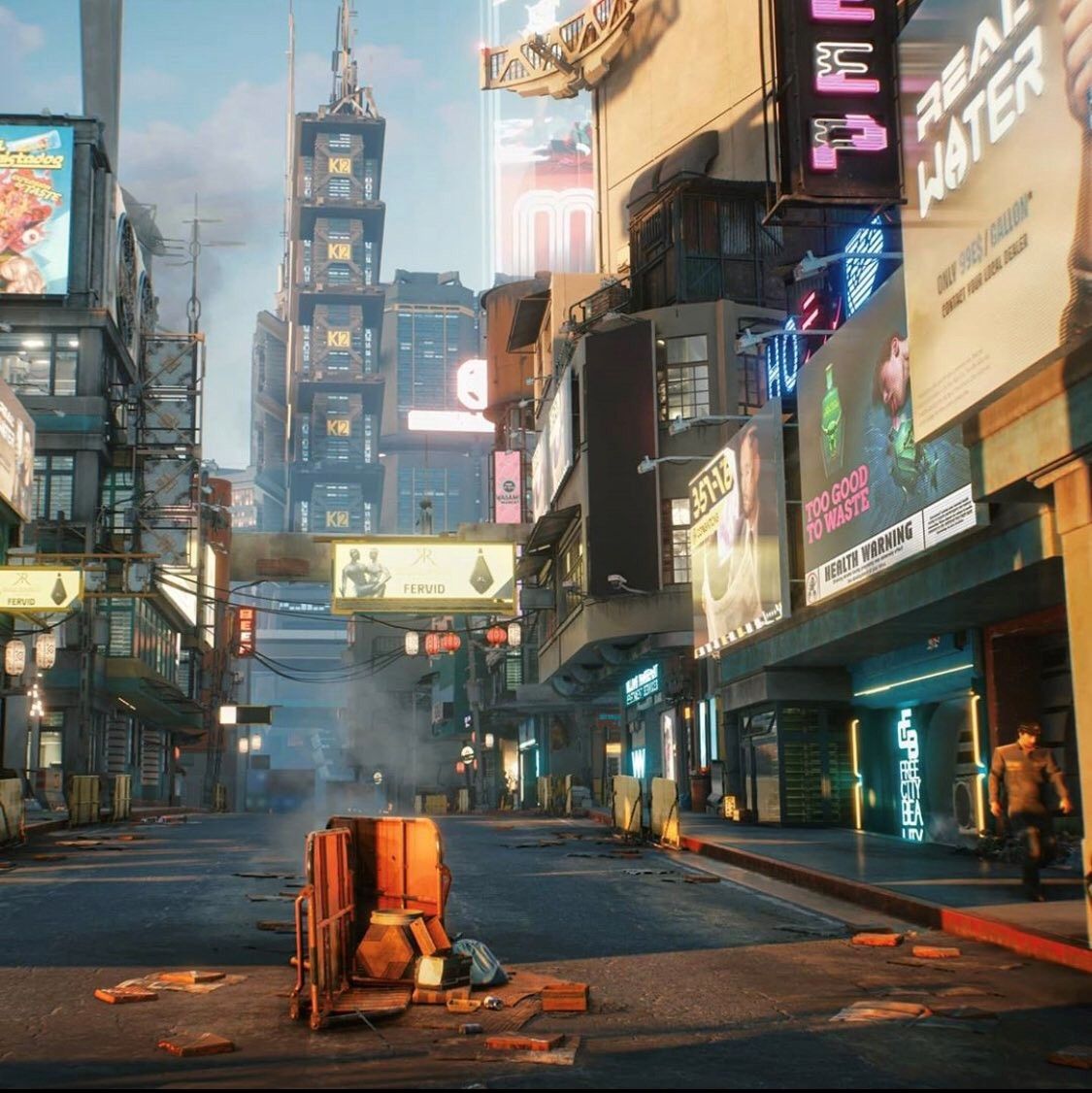
Cyberpunk 2077
18th July 2025Review by Walid Bhatt.
When Cyberpunk 2077 launched in 2020 it was a bit of a catastrophe. There were bugs and, worst of all, missing features. It became infamous. After years of reworking and a PR exercise to repair the image of a broken game, it’s become something closer to what was originally promised: a messy but mesmerising open-world and one of the most fascinating cities in gaming ever built.
You play as V, a shady freelancer making ends meet through heists and occasional corporate sabotage. A botched job leaves you sharing your mind with Johnny Silverhand, a long-dead rocker-turned-radical, played by Keanu Reeves. The story circles around identity, technology, and mortality, but, in one of its biggest faults, we are rarely allowed to probe these topics deeply. Unlike Deus Ex, which tied together gameplay, world-building and storytelling into a believable universe, Cyberpunk 2077 prefers to let the big ideas linger as atmosphere.
It’s a shame. The world of Cyberpunk 2077 is capable of sustaining much heavier thinking. Night City is a sprawl of glittering towers and crumbling neighbourhoods, layered in ways that make it feel improvised rather than masterplanned. The architecture is telling: high-rise luxury apartments and corporate plazas sit above small bars, gang territories, and decaying public spaces. Power seems to coincide with altitude.
The city can be navigated from above with elevated highways, rooftop gardens and the hovering metro system. Between the collapsing shopping centres and prefab housing, you feel how the residents of Night City have to fend for themselves.
Night City channels the megastructure dreams of the 1960s. It is modular and colossal but its out-with-utopian-optimism and in-with-corporate control.
The best parts of Cyberpunk 2077 aren’t the main missions, but the hours spent walking, searching, absorbing. There is great environmental storytelling with abandoned churches repurposed by squatters, flooded tunnels haunted by rogue AIs and ad-hoc solar farms on the city’s fringes.
Night City also feels oddly familiar. If you’ve walked around cities where new developments rise unevenly through piercing the crumbling fabric you’ll recognise the logic. The future feels destined to become a messy, awkward layering of ideologies imposed onto the landscape.
The main plot is passable rather than essential, and some systems such as the complicated but intriguing skill tree force the player to go online and figure out the best builds to truly appreciate the combat systems. The community has come up with imaginative ways to play. One day I can play like I’m John Wick with slick, stealthy precision and on another like I’m a cyborg George Foreman crashing through enemies. This is one of the joys of the game. I can play it as I want and not be punished for it.
As a city simulator however, it’s extraordinary. It’s a glimpse into where we seem to be headed: a neoliberal architecture which, rather than liberating, has been wielded as a tool of division based on wealth. That might be the game’s greatest achievement.
